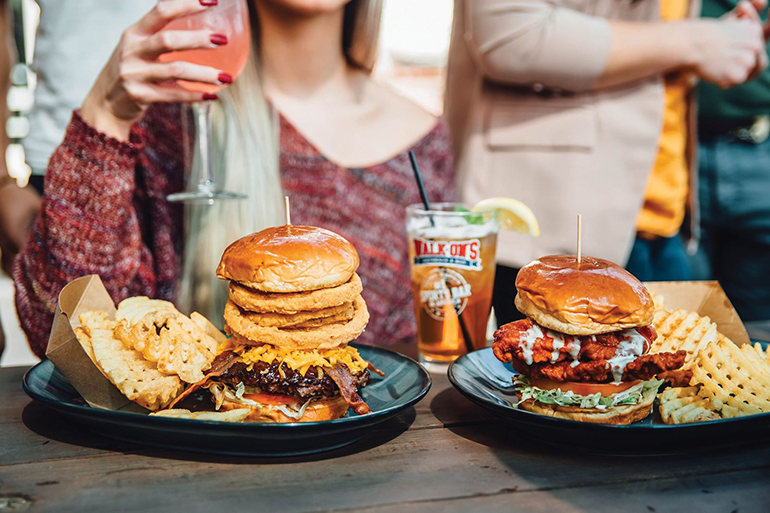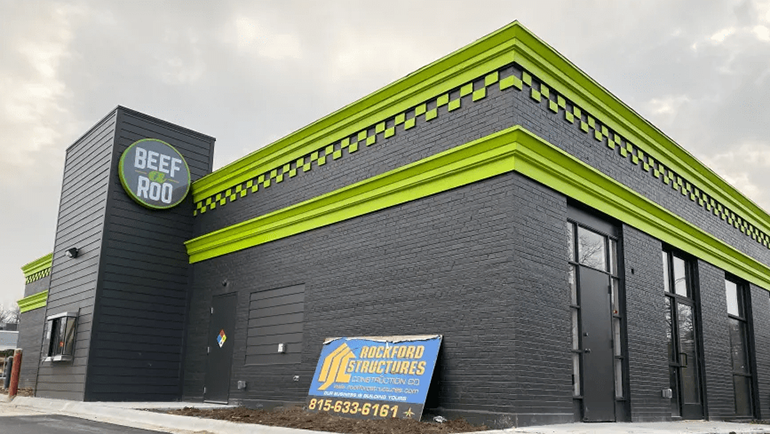What does “growth” mean for restaurant businesses in this “new normal”? Find out below and throughout the Growth Report:
- A look at today’s growth pinch points: financing, labor, real estate
- More than ever, growth is impacted by geographic variations
- This segment has emerged as the sweet spot for industry growth
Amid this strange and relentlessly challenging environment, many brands continue to be aggressive with their expansion ambitions. (Ambition is how this industry rolls, after all.) Here’s how three wildly different concepts, as well as one franchising accelerator, have adjusted their approaches to grow in this new normal.
Rock N Roll Sushi
Rock N Roll Sushi, an American-style sushi concept founded in Alabama in 2010, has expanded to nearly 70 locations throughout the southeastern U.S., with more on the horizon, including a move westward. The company recently opened a second Phoenix-area location while Colorado, Arkansas, Missouri, Florida, and Tennessee are also set for openings soon. According to Chris Kramolis, chief development officer, Rock N Roll Sushi’s growth is driven by its position in a less crowded sushi/hibachi category.
“Multiunit/multi-brand investors are interested in concepts with limited competition and are actively looking for franchise brands that complement their portfolio,” he said. “Rock N Roll Sushi gives them an opportunity to capitalize on the rapidly growing Asian Fusion market with an emerging brand that is rapidly expanding. One great reason for investors to come off the sidelines? FOMO (fear of missing out).”
That said, the concept isn’t immune to existing challenges, including tight real estate inventory. Rock N Roll Sushi is prioritizing second-generation locations accordingly. Kramolis said this can save a franchisee “hundreds of thousands of dollars” on space with already existing mechanical, electrical, and other utility functions in place. The company is also opening smaller prototypes, as about 40% of its sales mix is off premises.
“This allows us to decrease the size of dining rooms and develop more efficient ways to service the off-premises business,” he said. Pre-Covid buildings were about 2,000-2,500 square feet. Now the company is designing sites as small as 1,600 square feet with the same volumes.
Catering has also become a bigger priority to achieve growth. Kramolis said the concept has an advantage here as a differentiated option amid a catering category rife with sandwiches, barbecue, and pizza. With these adjustments in play, Rock N Roll Sushi’s target goal for growth is about 250 locations in five years.

One of Taco Bell's biggest insulators is a robust roster of sophisticated franchisees.
Taco Bell
Taco Bell has been around for over 60 years and has grown to over 7,000 locations, including an international footprint. That said, it’s still growing quite aggressively; last year, the company opened 207 net new restaurants in the U.S., its most since 1999.
During a recent interview, Scott Mezvinsky, president of North America and International, said the driver of this momentum is franchisee enthusiasm for the brand’s unit economics. According to Technomic data, average unit volumes exceeded $2 million in 2023, while margins are in the mid-20% range.
The company spends a lot of time understanding where profitable growth can come from, and that includes opening the right prototypes — like drive-thru-only or Cantina — in the right markets. To navigate the choppy waters created by inflation and other factors, Taco Bell has extended some opening lead times to make sure franchisees feel confident about their “multimillion [dollar] bet” and is “really scientific” about where the right trade areas are for openings, Mezvinsky said. The company also maintains a robust company-owned portfolio.
“This helps us make sure we are putting our money where our mouth is and also maintaining unit economics ourselves so we can lead by example,” Mezvinsky said. “The one thing we can do is what is in our control: How we continue driving topline growth while maintaining margins for our company stores, which will translate, hopefully, to maintaining margins at the franchisee level.”
One of Taco Bell’s biggest insulators in an environment filled with headwinds is simply having a robust roster of sophisticated franchisees, many of whom have their own capital structures – including locked-in interest rates. That’s not to say additional headwinds don’t pop up, however, such as California’s new minimum wage law raising the floor to $20 an hour. Taco Bell is headquartered in California and has a sizeable footprint in the state. Mezvinsky said the company is sharpening its focus on value in response.
“If you’re not providing the consumer value, you’re not relevant. How do we do that in a way that protects franchisee returns? We work closely with our franchisees … and have company stores in California, which I think gives us credibility. Whatever challenges come and go in whatever state, we have that partnership with our franchisees,” he said.
It’s also worth noting that Taco Bell is also growing through its menu, recently launching a new Cantina Chicken menu with an objective of generating more lunch traffic, for instance. Mezvinsky said the brand is striving to be considered for more occasions and it is leveraging the fastest growing protein in chicken to achieve that goal. Overall, Taco Bell is focused on four components to maintain its momentum: value, driving more occasions, creating brand buzz around innovation, and digital.
“If we do those four things well, the topline will continue to grow,” Mezvinsky said.

Walk-On's is focused on how to build operational expertise among franchisees.
Walk-On’s Sports Bistreaux
Restaurant/bar concept Walk-On’s Sports Bistreaux was founded in 2003 by Brandon Landry and his partner Jack Warner — two former walk-ons for the LSU basketball team — and it has since grown to nearly 70 locations in 15 states. During a recent interview, COO Kendall Ware said the concept’s recent growth has been fueled by its franchisee base, who are largely high-net-worth individuals “because of the celebrity involvement.” The celebrity involvement includes co-ownership from future NFL Hall of Famer Drew Brees and a partnership with future NFL Hall of Famer Jason Kelce.
That said, while Walk-On’s has had little trouble getting development commitments in this environment, there is work to be done on the operating side. Ware said the company is focused on how to build that operational expertise among franchisees and is doing so through what he calls a “funnel” process.
“We’re focused on the funnel that gets us to the growth side, which is how to build up operators. We have a certification program and process in place to go find and build up that talent, groom them in restaurants corporately or in a franchised-supported role, and once we find their location desire, we match-make and send them to support the new growth. We’re trying to find the confidence builder — anyone with access to cash, we have an opportunity for you in this market and it speeds up the learning curve,” he said.
Walk-On’s is also prioritizing second-generation locations and conversations. Ware said they’re more affordable and present a faster-to-market opportunity.
“We’re a bigger model to build. There’s a lot that goes into it and it takes a lot more time,” he said. “We know our brand awareness will get stronger the more locations we have and the faster we get them open, so why not focus (on second-gen and conversions)? We are still trying to build up that awareness, so guests know who we are as a brand,” he said.
About two years ago, the company also developed a smaller prototype, called the “Bulldog,” which cuts about 25% out of buildout costs in some markets. Ware said the model still generates projected volumes and therefore has “more revenue generating square footage.”
Beef-a-Roo is in NEXT Brands' portfolio.
NEXT Brands
NEXT Brands and Development, a strategic growth accelerator of franchise brands, recently expanded its portfolio to QSR concepts like Beef-a-Roo and Blenderz. The concepts are growing via modular prototypes, while the company also recently added a drive-thru-only option that requires a lower initial investment and lower overall labor costs.
“A drive-thru-only concept can be situated in non-traditional locations, such as a leased parcel of land within a big-box retailer. This arrangement provides a ready-made customer base and unlocks a variety of markets that were previously inaccessible to franchisees,” said Megan Rosen, chief of development.
NEXT Brands has also developed four new investment levels for prospective franchisees. These adjustments have become a priority as franchisees become more hesitant to invest in perceived riskier ventures with longer return timelines. In response, Rosen has adjusted her messaging to focus more on where the consumers are spending their money.
“Two significant trends are occurring simultaneously: Customers seek value for their dollar without compromising on quality. Unlike the ’90s, health and wellness have become pervasive, and we are more conscious than ever about what we consume,” she said.
This will play more favorably toward mid-range, fast-casual restaurants that offer quality and healthy options, she added.
Contact Alicia at [email protected]





